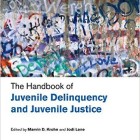
Giving Inmates with Life Sentences 2nd Chance Is Right Thing to Do
|
I went to prison as a child and was expected to die there.
Juvenile Justice Information Exchange (https://jjie.org/tag/juvenile-justice/page/13/)

I went to prison as a child and was expected to die there.

Luis Zepeda, 19, has gone to juvenile camp three times. His most recent release was after Los Angeles began a new re-entry program designed to steer youths to resources.
“I didn’t get no resources,” Zepeda said. “It was always punish, punish, punish, punish.”

Presidential politics is in full swing and while the number of candidates is being reduced, those remaining are still in the platitudes stage. You know how it goes: Each speaker states his or her faith in America, the strength and world leadership of the United States, the need to right the wrongs of past politicians, that progress must be made and that only “Change!” can save our future.

Over the past 15 years, the United States has seen drastic reductions in its world-leading rates of youth incarceration. Nowhere were these reductions more dramatic than in California, which once boasted the largest youth corrections system in the world.

Hey, you! Yes, YOU can make it happen! Anyone can. Whether you are a principal, a student, counselor or teacher, you can be the one to speak up for restorative justice. “Be the change you wish to see in the world” (Mahatma Gandhi).

Lately I’ve read so many articles on juvenile and criminal justice reform laws being passed it’s surreal. The truth is, hardly any kids will be directly impacted by this because there are practically no juveniles in federal prisons. I can’t dwell on this but need to keep working on more reforms.

The title and cover of this book immediately sparked my interest, since I had practiced law in the juvenile justice court systems across Georgia as a defense attorney and state prosecutor for almost 20 years.
I was born on April 5, 1977 in Harbor City, California. I am 35 and I have been incarcerated since the age of 16. I was tried as an adult and sentenced to 15 years to life for second-degree murder and two attempted murders.

Under pressure from the courts to reduce his state’s prison population, California Gov. Jerry Brown has thrown his support behind a plan that’s likely to slash the number of teens who get prosecuted as adults.

One important aspect of the discussion of the solitary confinement of youth that has received little attention is the role of race and socioeconomic status. Research has demonstrated that young people of color — like Kalief Browder — are more likely to be placed in the juvenile and adult court systems, to remain in them longer and to experience more punitive sanctions than whites.